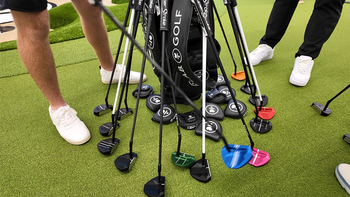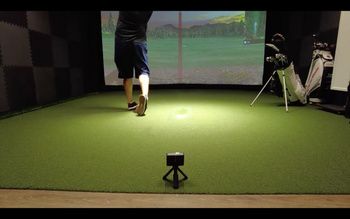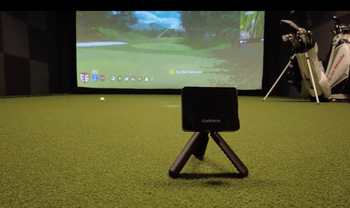Protecting your ceiling with sturdy materials like acoustic foam panels or gym tiles is a must when using a golf simulator. These materials excel at absorbing shocks and reducing noise, which helps prevent damage from stray golf balls. Robust hooks or anchors are necessary to secure these materials properly and avoid accidents during play.
When choosing ceiling protection, consider the thickness and density of the material. Thicker materials tend to be more effective at absorbing shocks, while denser materials are better at reducing noise. Acoustic foam panels, for example, are designed to absorb sound waves, making them an excellent choice for golf simulators.
Proper installation is also crucial. Make sure to follow the manufacturer's instructions for installing the ceiling protection material. If you're not comfortable with the installation process, consider hiring a professional to do the job.
By taking the necessary precautions and installing sturdy ceiling protection, you can enjoy your golf simulator without worrying about damaging your ceiling. Additionally, it's crucial to factor in golf simulator height considerations to ensure that your setup allows for a full swing without any obstructions. Verifying the dimensions of your space beforehand will help avoid potential mishaps and enhance your overall experience. By addressing these elements, you can create a safe and enjoyable environment for your practice sessions.
Table of Contents
Choosing the Right Material
You have several options when choosing the perfect material for your golf simulator ceiling. Durability, aesthetics, and impact resistance are key factors to consider. The right choice will protect and enhance your practice area.
Acoustic foam panels absorb the shock of high-speed golf balls and dampen sound. You can swing without disturbing others in your home. These panels also keep your ceiling mark-free.
Gym tiles are built for durability and can withstand heavy impacts. They're commonly found in fitness centers and add a protective layer to your ceiling that absorbs impact and reduces noise. This makes your practice sessions more enjoyable.
Netting is a cost-effective, lightweight, and easy-to-install alternative. It's perfect for catching stray golf balls that might otherwise damage your ceiling. While it doesn't offer as much soundproofing as foam panels or gym tiles, it effectively prevents physical damage.
The suitable material will make your golf simulator functional and visually appealing. It enhances your overall playing experience without disrupting your home environment. Remember, it's not just about protection; it's about creating the best setup for your game. Choose wisely to optimize your practice space and elevate your skills.
Installation Tips
Setting up a golf simulator requires careful installation of ceiling protection. Manufacturer guidelines should be followed for spacing and securing the protection in place. A gap between the ceiling and the protective layer is necessary to catch stray golf balls without damaging the roof.
Strong hooks, anchors, or screws are essential for mounting hardware to handle the weight and occasional high-speed golf ball. This ensures the ceiling protection remains stable during intense golf sessions.
The type of ceiling protection depends on specific needs. Nets, mats, and padding serve the same purpose but have different installation requirements. Nets need a broader area to snag balls effectively, while padding should be strategically placed to absorb impact.
The setup's appearance is also important. The golf simulator should be inviting and aesthetically pleasing, not just functional. Materials and layout should complement the room's decor, enhancing safety and style. A well-integrated setup makes the golf simulator a highlight of the space.
Cost Considerations

Choosing the right ceiling protection for your golf simulator is vital. It's not just about saving money upfront but also ensuring the longevity of your setup. The key is finding a balance between cost and effectiveness.
Affordability is a significant factor. Options like acoustic foam panels and gym tiles are budget-friendly without compromising on quality. They provide a decent level of protection for your ceiling.
If you're looking for more robust protection, consider foam insulation boards and ceiling nets. They're designed to keep your ceiling in top shape. Although they may cost more, the long-term savings can be substantial. By investing in these options, you can avoid costly repairs or replacements down the line.
Ceiling nets are another option worth considering. They're specifically designed to catch golf balls in mid-air, shielding your ceiling from direct hits. While they may be more expensive, their targeted protection can be worth the extra cost. With some savvy shopping, you can find deals that bring the price down significantly.
Conclusion
Protecting your ceiling from damage is a key part of setting up a golf simulator.
Ceilings in golf simulator rooms require proper protective materials to prevent scuffs and marks from stray balls or clubs.
Effective protection maintains your space's appearance and avoids costly repairs. Investing in high-quality protection options can foster an optimal experience. Strong protection can keep your ceiling intact, even after repeated golf simulator sessions.
Proper protection encourages safe, worry-free play. Installing safety measures in your golf simulator room lets you focus on perfecting your swing.





